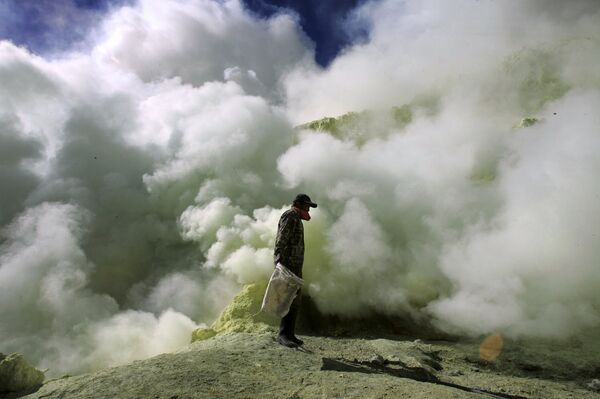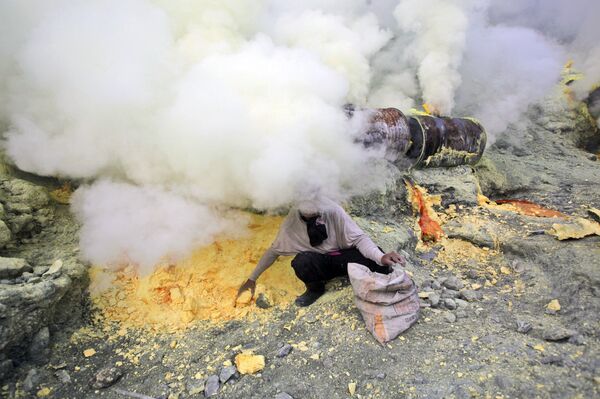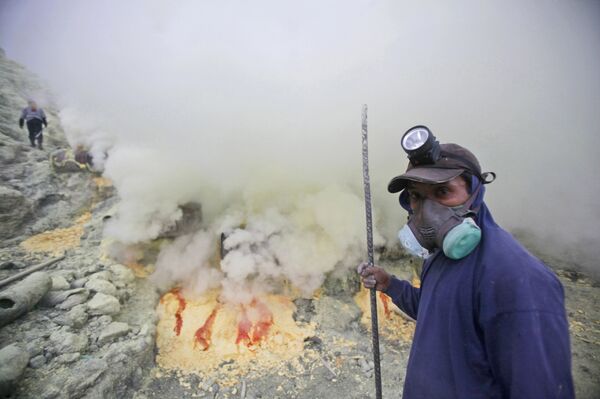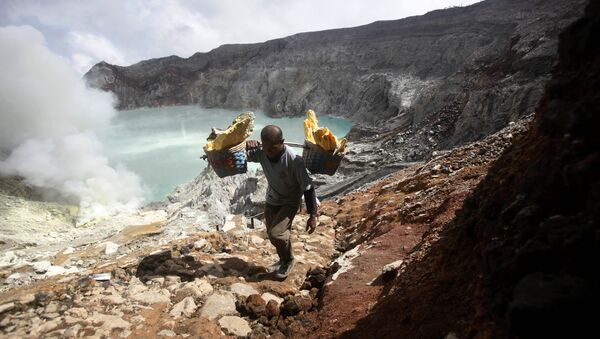Hundreds of villagers who live around the Ijen volcano complex in East Java, Indonesia, spend their days in the volcano's dangerous environs in the hope of collecting valuable sulfur, RIA Novosti reported on Wednesday.
The Ijen volcano is home to two of the most unusual occurrences on Earth. The first is a fumarole, an opening in the planet's crust which emits steam and gases, in this case flammable sulfurous gases that ignite as they enter Earth's oxygen-rich atmosphere and burn with an electric blue flame.

In this Thursday, Aug. 6, 2009 photo, a miner stands against thick volcanic fumes at a sulphur mine at the crater of Ijen volcano in Bayuwangi, East Java, Indonesia
© AP Photo / Irwin Fedriansyah
The second phenomenon is the world's largest highly acidic lake, which has a measured pH as low as 0.5. The caldera is 2,600 meters above sea level, one kilometer wide and filled with turquoise-blue water, a result of its extreme acidity and a high concentration of dissolved metals.

In this April 16, 2016 photo, volcanic smoke blankets a miner as he collects sulfur rocks he just dug up at the crater of Mount Ijen in Banyuwangi, East Java, Indonesia
© AP Photo / Binsar Bakkara
Despite the danger from the volcano's toxic vapors, hundreds of local villagers make several trips to the volcano each day for sulfur. The day's work begins at midnight, when locals set off in order to reach the volcano before sunrise and scorching daytime temperatures.

In this Thursday, Aug. 6, 2009 photo, miners carry buckets of sulphur at the crater of Ijen volcano in Bayuwangi, East Java, Indonesia
© AP Photo / Irwin Fedriansyah
Many of them only have a wet rag to protect themselves from the fumes, and use crowbars and shovels to collect the sulfur in baskets. They weigh their load at a base three kilometers away, and then return to the volcano.

In this April 16, 2016 photo, a sulfur miner pauses as he works at the crater of Mount Ijen in Banyuwangi, East Java, Indonesia
© AP Photo / Binsar Bakkara
For one day's hard work, during which they make at least three or four trips to the crater and back again, a sulfur worker can expect to make $10-$20.



